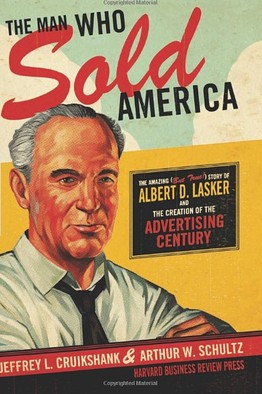We like to think we invented the wheel. We like to think it was us who brought fire down from the mountaintop. We like to think it because while it is easy to be mediocre in this business, it is really really hard to be great. But the fact is, we didn’t. Fire was here long before we showed up and the guy who stole it from the gods in his Duisenberg roadster was Claude C. Hopkins.
Who?
Claude C. Hopkins was one of the geniuses that Albert Lasker hired in the early days of the twentieth century. How good was he? He was 41 when Lasker hired him in 1907, for a salary of $185,000. In 2010 dollars that’s roughly $4,272,568.78 a year. (http://www.westegg.com/inflation/infl.cgi) Yeah. And you thought you were good.
What made him so hot? Well, for those of you over forty, he wrote the tagline “The beer that made Milwaukee famous” for Schlitz. For those of you under forty, Schlitz became one of the most popular beers of the twentieth century under Hopkins – until it wasn’t anymore (you know how it goes) – and they lived by that line through World Wars, Depressions, Recessions and Atomic Bombs. And how long has your copy lasted? Me neither…
Hopkins believed that a writer should know everything about his product, and he would research endlessly to find something new and unique and distinctive to say. For example, it was during one of his endless factory visits that he discovered that the way his client made puffed rice cereal (a product that they didn’t even advertise when he got a hold of it) was by shooting it out of guns. Yes. Out of guns. Hopkins made that the focus of his marketing (and doubled the price to both cover advertising costs and shift the brand from the bargain buyer to the elite class) and made it the most successful cereal of its day.
But My Life in Advertising – which is bound together in one volume with his other masterpiece Scientific Advertising (reviewed here) – isn’t just a compendium of anecdotes. It’s mostly about how great advertising is made. And not made. Like this:
There lies the chief reason why no manufacturer should ever conduct his own advertising. The advertiser is too close to his factory. His own interests tend to blind him to the interests of his customers. He fails to appreciate the consumer’s side. He tells of the things he takes pride in – his methods and processes, the size of this plant, the age of his business, etc., The advertising man must study the consumer and tell what he wants to know.
Or this:
One must outbid all others in some way. He must offer advantages in qualities, service or terms, or he must create a seeming advantage by citing facts which others fail to cite. Crying a name or brand is not sufficient. Urging people to buy from you instead of others goes against the grain. One must know his competition, know what others offer, know what people want.
Hopkins didn’t believe in beautiful language, or humour, writing “People do not buy from clowns”. He was, when all is said and done, a salesman. Again and again the book shows his obsession with distribution, with getting the products into stores and into customers’ hands – and with creating advertising that facilitated those things as cost-effectively as possible.
It also shows a darker side. Work was Hopkins’ life. He came from serious poverty, from deeply religious parents and from tough Scottish stock and he equated play, relaxation, and leisure with laziness, indolence and sloth. Tellingly, he writes at one point “Amusement is transient”. I’ll say…
But advertising is about everything, and that includes fun. And the advertising person who is not engaged in life, who walls himself off from people as it appears Hopkins did, who denies himself everything that is not his work – seems to me to be missing something important, personally certainly if not professionally. Something that would become vitally important to the business in the decades following Hopkins’ death in 1932.
But that does not take away from the value of this book. So much of what Hopkins wrote in 1927 is just as vital today. And proves that while tactics come and go, it’s the thinking that uses those tactics that makes what we do succeed.
My Life in Advertising by Claude C. Hopkins was re-published by McGraw Hill on 1/11/66 (with his other groundbreaking book “Scientific Advertising”) – order it from Amazon here or from Barnes & Noble here – or pick it up at your local bookseller (find one here).
Please be advised that The Agency Review is an Amazon Associate and as such earns a commission from qualifying purchases
You May Also Want to Read:

by Claude C. Hopkins

by Rosser Reeves

by David Ogilvy

Reading Hopkins is like going to a personal trainer. There is NO flab in his oh-so-punchy copy: Declarative sentence. Period. Declarative sentence. Period. Question? Answer. Period. Hopkins probably has more periods per page than anyone I know, and if you read him regularly you will maintain a healthy suspicion of your copy style.